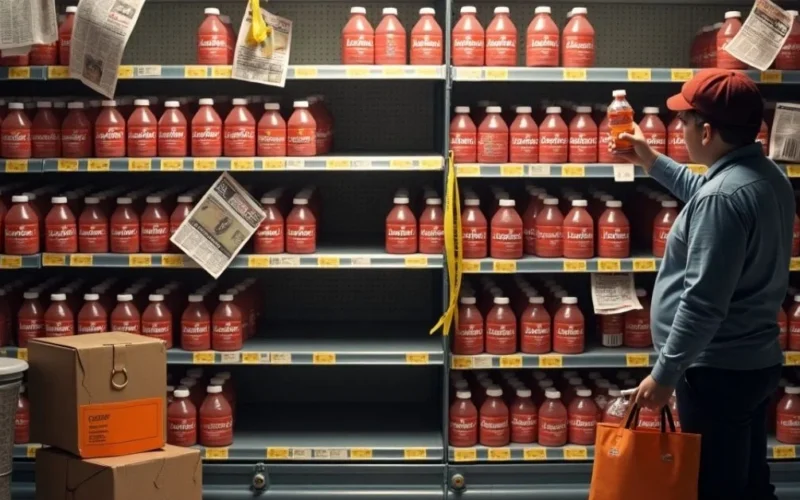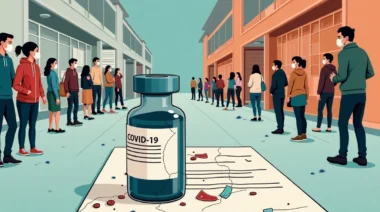Table of Contents
- What Is Lucozade and Why Does It Matter?
- Timeline of the Lucozade Shortage
- What Caused the Lucozade Shortage?
- How Stores and Wholesalers Responded?
- What Customers Experienced During the Shortage?
- When Will Lucozade shortage Be Fully Back in Stock?
- What does This mean for the Energy Drink Industry?
- Lessons from the 2025 Lucozade Shortage
- How Suntory Responded to the Crisis?
- Can a Similar Shortage of Lucozade shortage Happen Again?
- Conclusion
What Is Lucozade and Why Does It Matter?
Lucozade shortage 2025 is a popular British energy drink that has been around since 1927. Originally developed as a glucose drink for sick people, it evolved into a top sports and energy beverage brand. Millions of people drink it regularly, from athletes to students to busy professionals.
Because of its wide use, any disruption in its availability affects not just individuals but also businesses that rely on it for sales.
Besides sports, Lucozade is also commonly used in schools, hospitals, and workplaces where quick energy and hydration are needed. For diabetic patients or people recovering from illness, it is sometimes considered a go-to drink for glucose management. All of these dependencies made the 2025 shortage even more disruptive.
Timeline of the Lucozade Shortage
The shortage didn’t happen overnight. Here’s a simple breakdown of how it unfolded:
- April 2024: A tragic factory incident at the Coleford site resulted in a temporary production halt.
- May–June 2024: Factory staff went on strike due to safety concerns and working conditions.
- Summer 2024: Supplies began running low as warehouses emptied and production was delayed.
- August 2024: Limited lines of Lucozade Sport and Energy resumed production.
- September 2024: More flavors slowly returned, but demand still outpaced supply.
- June 2025: Another production pause was announced for 11 Lucozade Sport variants.
- Mid-2025: Some stores saw renewed stock, but bulk buyers continued to experience shortfalls.
What Caused the Lucozade Shortage?
Several key factors came together to create the Lucozade shortage:
1. Factory Shutdown Due to Fatal Incident
The main Lucozade factory in Coleford shut down in April 2024 after a tragic accident. A worker lost their life on-site, which led the company to stop production and start a full investigation. This incident brought production to a standstill for several weeks, creating an immediate bottleneck.
2. Industrial Action and Strikes
Following the incident, employees raised concerns about factory safety. Unions supported walkouts, and workers went on strike. This made it even harder to restart production lines quickly. The strikes were not only limited to Coleford but sparked debates across other facilities as well.
3. Limited Production Capacity
Even when the factory started reopening, it couldn’t return to full capacity right away. Only a few top-selling Lucozade drinks were produced at first. Others, like limited editions and newer flavors, were delayed or paused. Some machinery required safety upgrades and quality checks before resuming work.
4. Supply Chain Disruptions
In addition to the factory issues, the Lucozade supply chain faced delays in getting raw materials. Global shipping problems and local logistics issues also slowed down delivery to stores. The shortage of bottles, labels, and even sugar compounds further complicated production.
How Stores and Wholesalers Responded?
Retailers and wholesalers reacted fast when they saw shelves going empty. Some of the key steps they took included:
- Stocking alternative brands like Red Bull and Powerade
- Issuing warnings to customers about limited availability
- Raising prices due to high demand and low stock
- Placing priority orders months in advance
- Launching awareness campaigns to manage customer expectations
- Some local stores even rationed bottles per customer to manage shortages.
What Customers Experienced During the Shortage?
Customers were frustrated. Many turned to social media to complain about not finding their favorite flavors. Some searched multiple stores and still came home empty-handed. Others had to switch to different drinks altogether, even if they didn’t like the taste or energy boost.
Some gyms, sports clubs, and schools also faced issues because they used Lucozade in bulk for athletes and students. In some areas, online black markets emerged where Lucozade was being resold at inflated prices. Consumers even reported expired or counterfeit products circulating during peak shortage weeks.
When Will Lucozade shortage Be Fully Back in Stock?
As of mid-2025, Lucozade production is running again but not yet at full strength. Most core flavors are available in major supermarkets, but niche or seasonal flavors are still missing. The company announced that the 11 paused lines should return by September 2025.
So while things are better than in 2024, shelves aren’t completely back to normal. The company stated that full normalization may only be achieved by late 2025 or early 2026, depending on supply chain efficiency and equipment upgrades.
What does This mean for the Energy Drink Industry?
The Lucozade shortage of 2025 sent shockwaves across the energy drink industry. Some key impacts include:
- Increased demand for competing brands
- Higher prices across the market
- Retailer partnerships shifting to new suppliers
- Focus on factory safety and employee well-being industry-wide
- Growth in customer loyalty programs as companies try to retain trust
- Innovation opportunities for smaller beverage brands
Lessons from the 2025 Lucozade Shortage
Here are a few lessons businesses and customers can learn from this event:
- Relying on a single production site is risky
- Worker safety and satisfaction must be a priority
- Companies should build better inventory buffers
- Clear communication with consumers builds trust
- Long-term planning must include crisis simulations
How Suntory Responded to the Crisis?
Suntory Beverage & Food GB&I, the company behind Lucozade, took several actions:
- Launched an investigation into the factory incident
- Worked closely with unions to improve safety
- Set a phased production restart plan
- Communicated updates through press releases and their website
- Invested in automation and new quality control systems
Their fast action helped limit long-term damage to the brand. They also launched a public campaign to educate customers and assure them of product quality.
Can a Similar Shortage of Lucozade shortage Happen Again?
Yes, but companies are now more aware. Suntory and other beverage brands are reviewing their production models. More factories, better automation, and smarter logistics could prevent future shortages.
Still, unexpected events like worker strikes or global shipping problems can always create risks. The lesson is that even industry giants need better risk management strategies to withstand such challenges.
Conclusion
The Lucozade shortage of 2025 wasn’t just about an energy drink running out. It resulted from serious real-world problems, factory tragedy, employee concerns, and supply chain weaknesses. For customers, it was an inconvenience. For businesses, it was a wake-up call. And for the industry, it was a moment to reflect and rebuild stronger. If there’s one thing the Lucozade shortage showed, it’s this: even everyday products we take for granted can vanish when systems break down.








